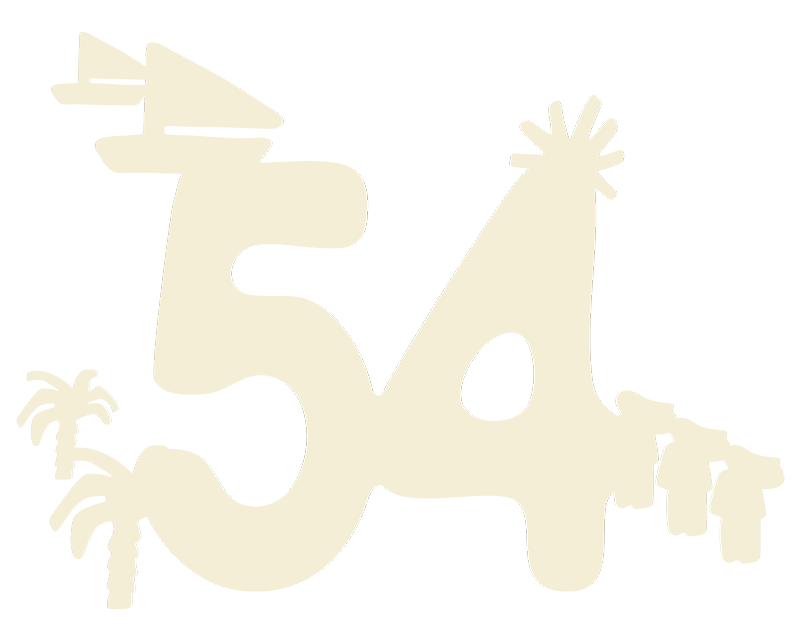
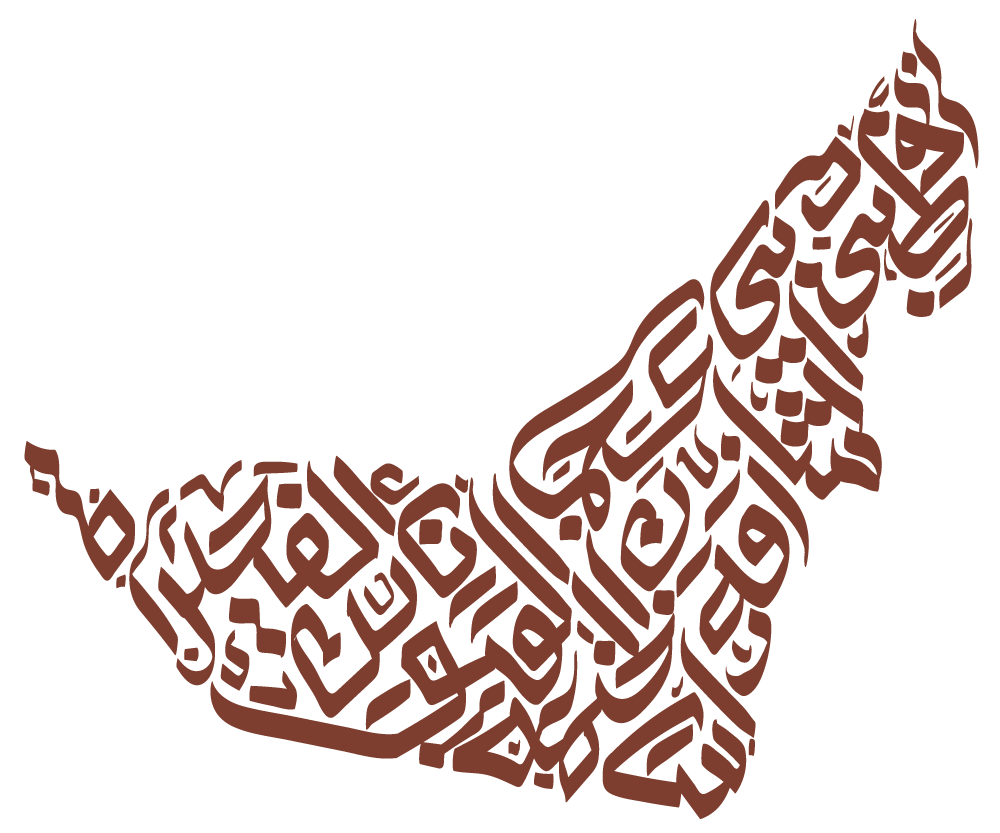
Every Emirate has its own unique features, places landmarks and areas. This section will provide you with an overview of the UAE’s seven emirates, every emirate with its own details.
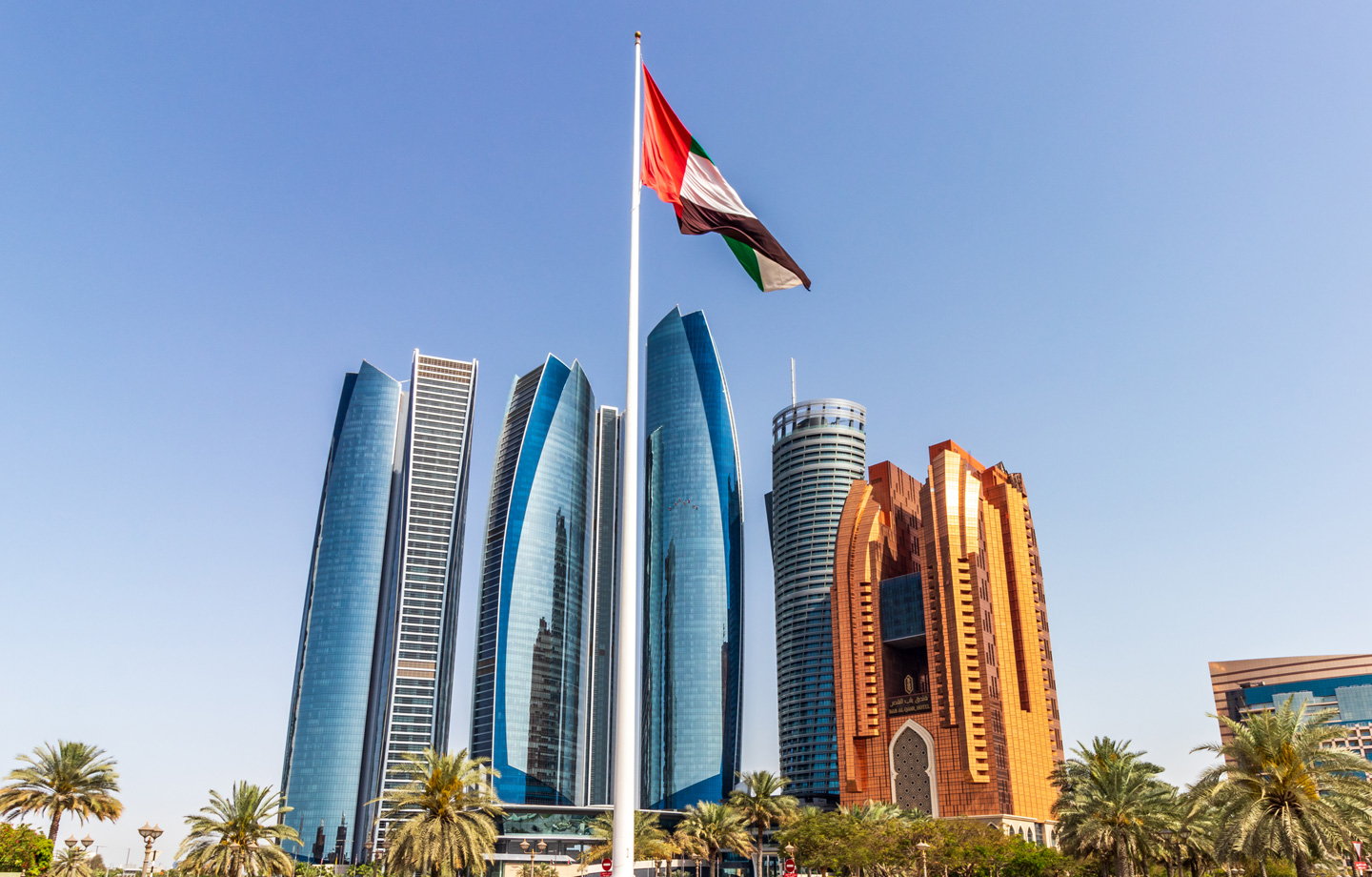
Abu Dhabi is the federal capital of the United Arab Emirates (UAE) and the home of government. It is the largest emirate in the UAE. The emirate covers 67,340 sq. km., with a coastline stretching 700 km. It has more than 200 natural islands.
The emirate of Abu Dhabi lies on the coast of the Arabian Gulf and is bordered by Sultanate of Oman to the east, the Kingdom of Saudi Arabia to the south and the west, and the emirate of Dubai to the northeast. The three main regions of the emirate are:
Abu Dhabi city: It is home to most ministries and foreign embassies, in addition to Zayed Port and Zayed International Airport. Abu Dhabi city is connected to the mainland by four bridges: Maqta bridge, Mussafah bridge, Sheikh Zayed bridge and Sheikh Khalifa bridge.
Al Ain region: It is located in the eastern part of the emirate; Al Ain is an area with highly fertile land and is renowned for its farms. To its south lies Jebel Hafeet, which rises 1,240 metres above sea level and making it the highest peak in the emirate and the second highest in the United Arab Emirates.
Al Dhafra region: The region includes extensive man-made forests planted to combat desertification, as well as several onshore oil fields. Al Dhafra Region has seven main cities: Liwa, Madinat Zayed, Ghayathi, Ruwais, Mirfa, Sila and Delma Island.

Dubai is the second largest emirate among the seven emirates of the UAE, with an area of 4,114 square kilometers, accounting for 5% of the country’s total area excluding the islands.
Dubai is known for its cultural diversity and is recognised as a cosmopolitan community where people live a lifestyle familiar to all. It has earned the titles “Pearl of the Gulf” and “The World’s Jewel” for its rich history and heritage.
Dubai is located on the eastern coast of the Arabian Peninsula, in the southwestern corner of the Arabian Gulf, stretching for about 72 kilometers. It is bordered by Abu Dhabi to the south and Sharjah to the northeast. The city rises approximately 16 meters (52 feet) above sea level.
The Emirate of Dubai also includes the mountainous area of Hatta, located about 100 kilometers away near the border with the Sultanate of Oman.
Dubai city is the capital of the emirate, and it is divided by a creek known as Dubai Creek into two parts: the southern part, Bur Dubai, and the northern part, Deira.
Dubai features many sandy beaches along its western side, tropical mangrove trees on the eastern side of the creek, vast deserts inland, and several valleys in the Hatta region.

Sharjah is the third largest emirate in the UAE with an area of 2,590 sq. km. It occupies 3.3 per cent of the total area of the UAE (not counting the islands). It is known for its picturesque landscapes and seascapes.
The emirate has many educational institutions, which ensure a continuous supply of fresh talent armed with the latest knowledge in engineering, science and technology and other skills that support economic growth.
It is the only emirate that lies on both coasts; the Arabian Gulf in the west and the Gulf of Oman (Indian Ocean) in the east. The coastline on the Gulf extends about 20km. and within 80km. to the Gulf of Oman.
The emirate has large desert regions, with some agricultural areas. Its islands include Sir Bu Nuair and Abu Musa. Sharjah has plenty of beaches, marshes and acacia forests.
Sharjah is home to the largest number of natural reserves in the UAE.
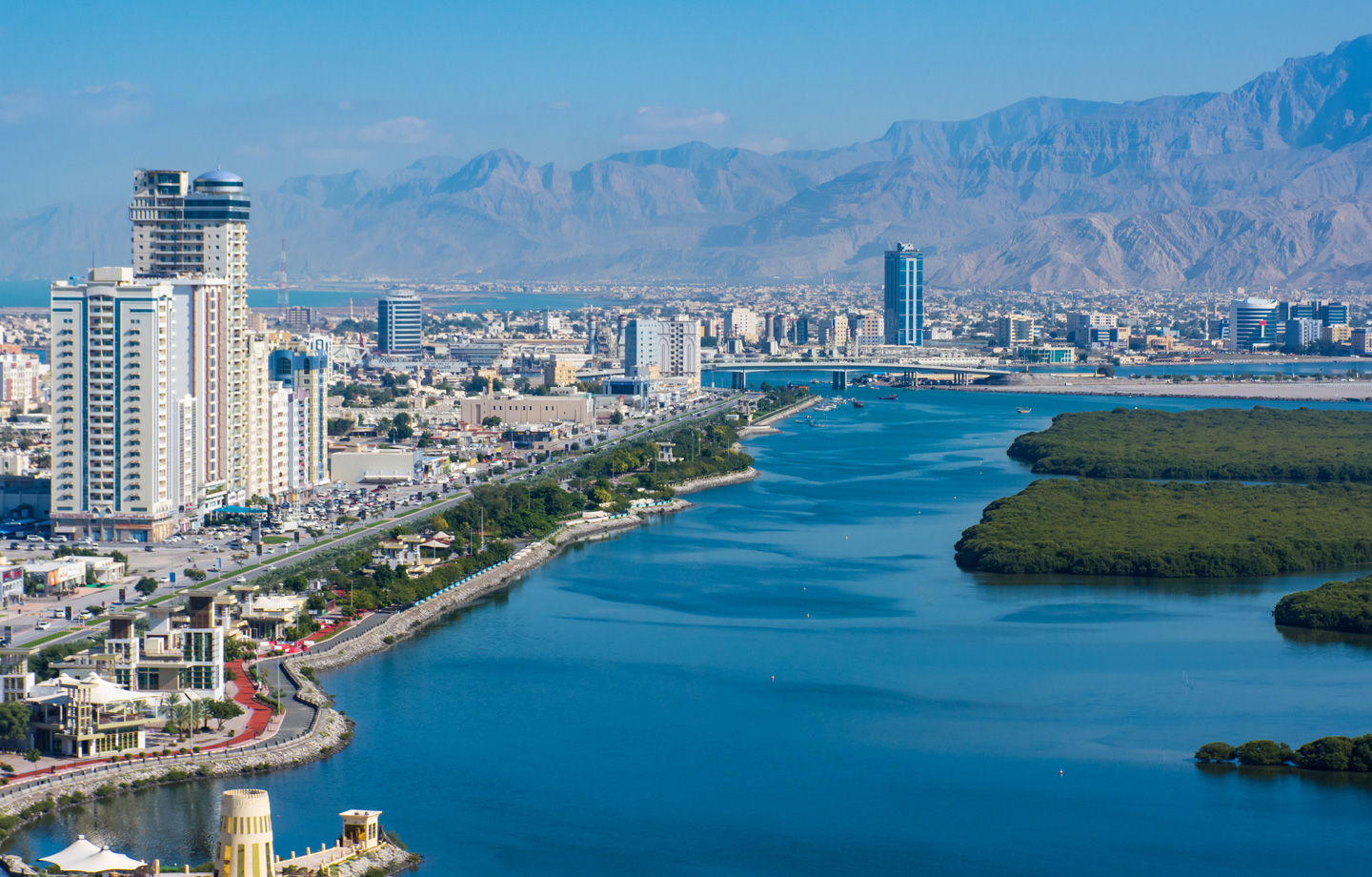
Ras Al Khaimah has a rich history dating back some 7,000 years. In the 13th and 14th centuries, a prosperous port arose in the area we now know as Ras Al Khaimah. Then named Julfar, it became one of the most prominent trading posts in the Arabian Gulf and was widely known for its exquisite pearls. The discovery of rare Chinese pottery in 2019 in this area points to the extent of trade that occurred in the erstwhile Julfar.
Ras Al Khaimah has about 1,000 archaeological sites, many of which have been added to the ‘UNESCO Tentative List for World Heritage’.
The emirate is also home to one of the best-preserved traditional fishing villages in the Arabian Gulf, Al Jazirah Al Hamra, and the only hilltop fort still in existence in the UAE, the 18th century Dhayah Fort.
Ras Al Khaimah is located near the northernmost point of the United Arab Emirates and shares its boundaries with the emirates of Umm Al Quwain, Fujairah and Sharjah. It shares its international border with the Sultanate of Oman.
The city of Ras Al Khaimah is the capital of the emirate. A creek divides it into two areas: the western old town of Ras Al Khaimah and the eastern part - Al Nakheel.
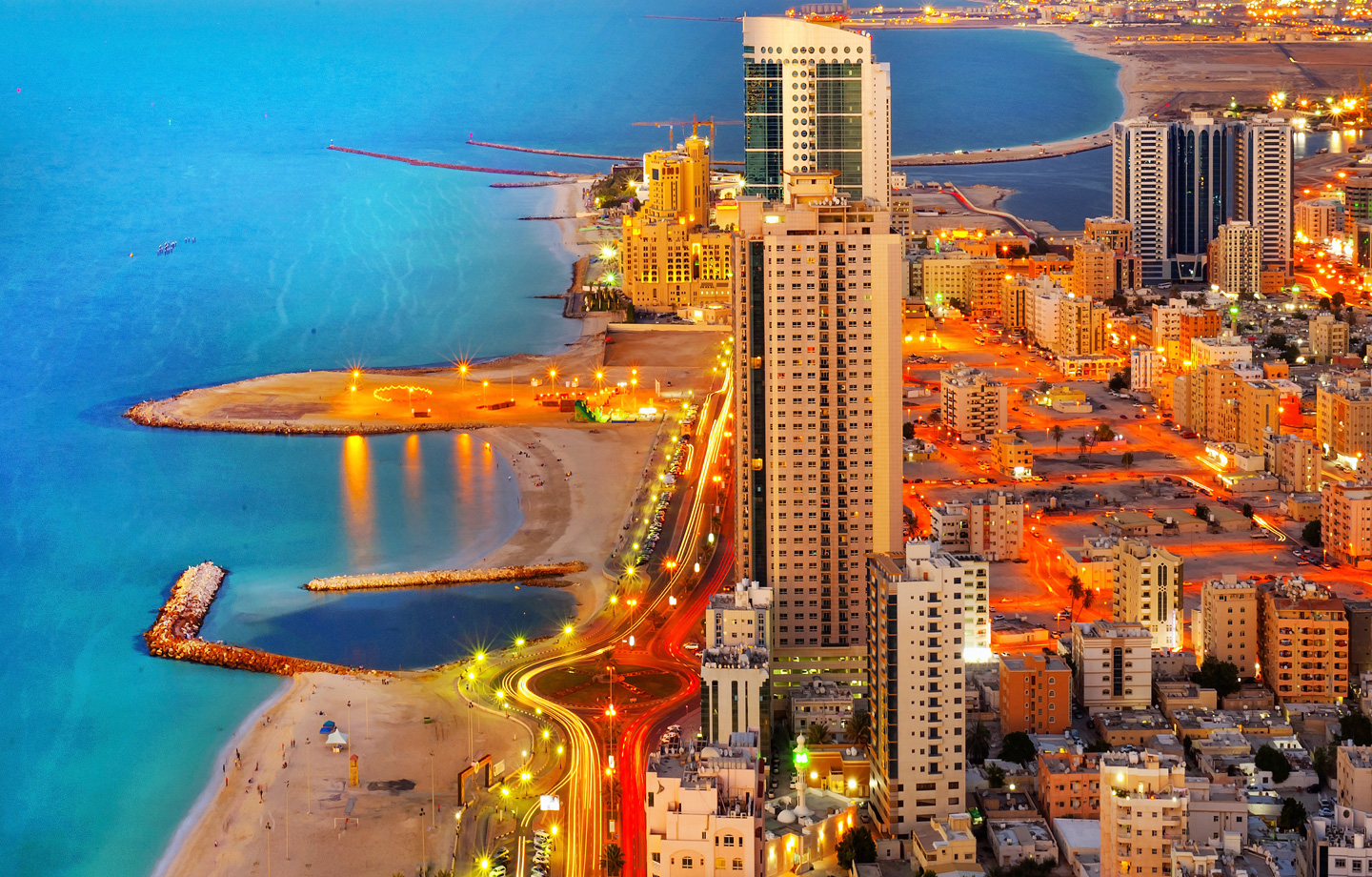
Ajman is the smallest of the seven emirates, with an area of about 260 square kilometers, which increases to 600 square kilometers when including its maritime boundaries. The emirate has a main seafront that serves as an attraction and leisure destination for visitors, featuring a 26-kilometer coastline along the Arabian Gulf. It is also distinguished by the presence of high mountains rich in magnesium, chromium, and building stones in the city of Manama.
Ajman blends a deep-rooted heritage that spans many years of the emirate’s history with a present that strives to achieve the highest forms of growth and modern development.
Ajman lies between the emirates of Sharjah and Umm Al Quwain in a strategic geographic location, and it is situated on the Arabian Gulf coast within the Northern Emirates.
The emirate has a predominantly desert character, consisting mainly of sandy plains. It features a 16-kilometer coastal strip along the Arabian Gulf, which has granted it great significance and enhanced the beauty of its natural landscape.
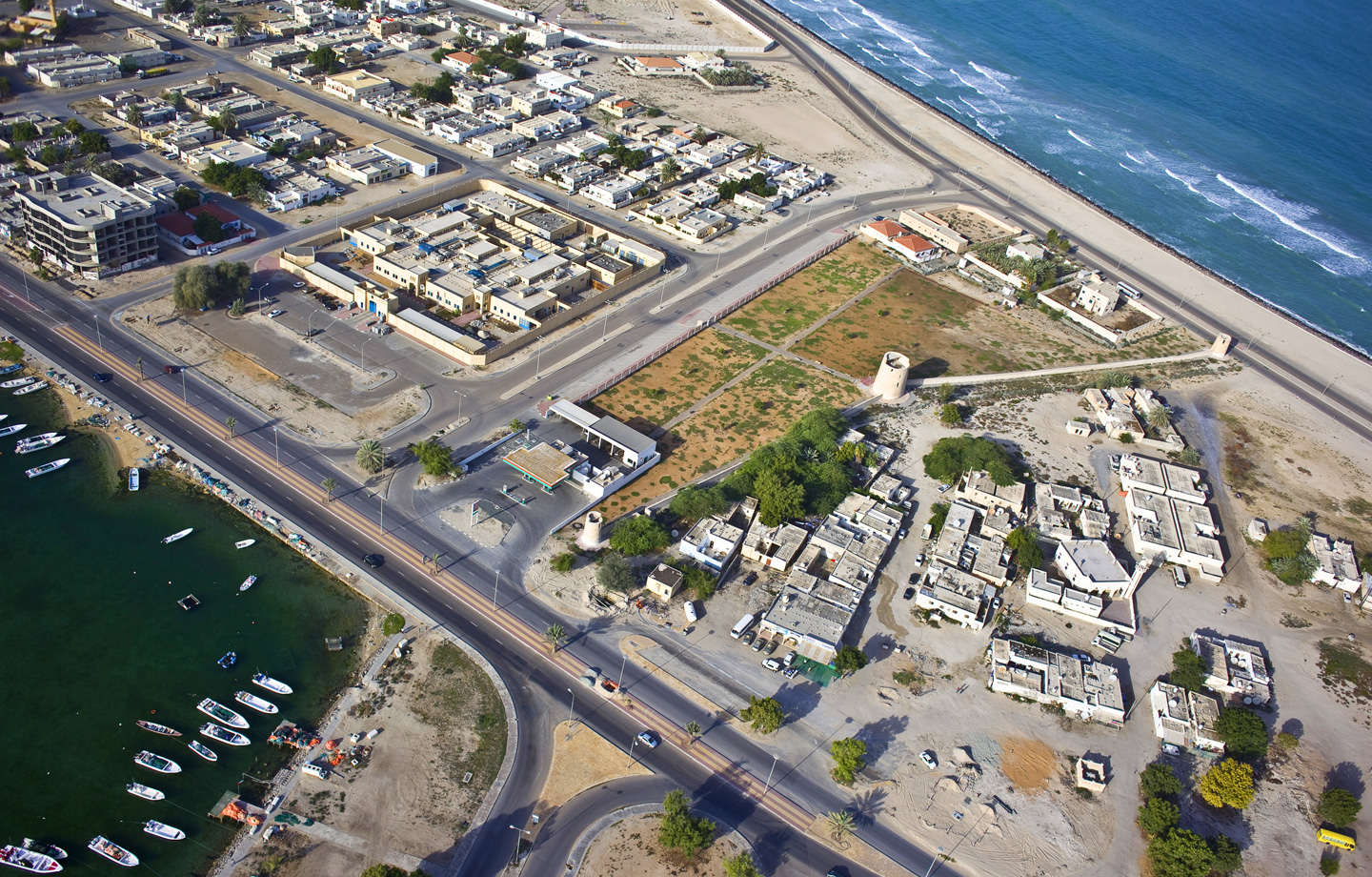
Umm Al Quwain is the second smallest and the least populated emirate in the UAE. It covers an area of approximately 720 sq. km, which is equivalent to 1 per cent of the UAE's area.
Umm Al Quwain is situated between Sharjah to the southwest and Ras Al Khaimah to the northeast. The city of Umm Al Quwain is built on a narrow peninsula called Khor Al Bidiyah.
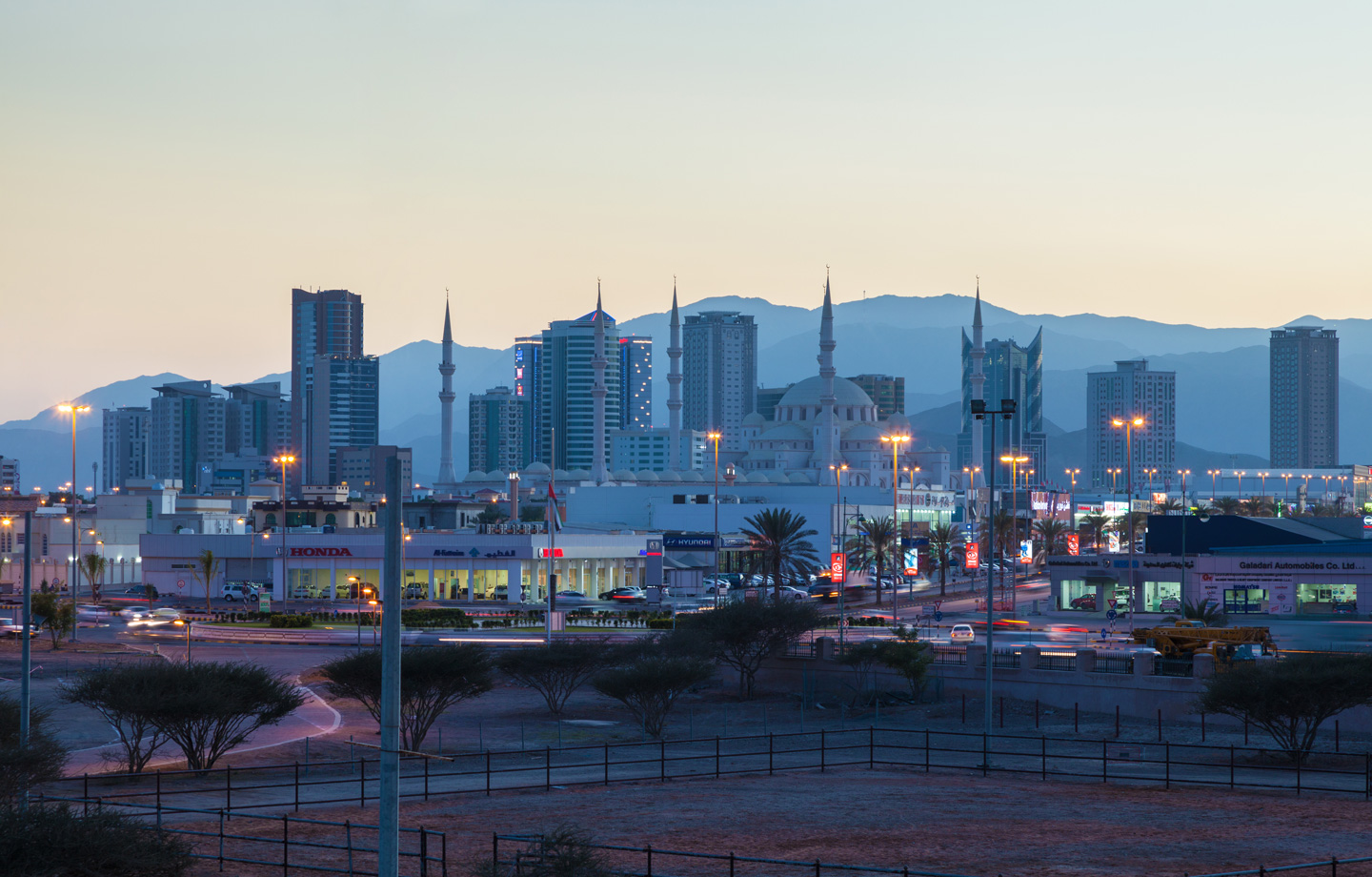
Fujairah is the only emirate that is located completely on the eastern coast of the UAE along the Gulf of Oman. The shores of Fujairah extend along the Gulf of Oman for about 70km. from the city of Fujairah in the south to the town of Dibba in the far north. The total area of the emirate of Fujairah is 1,580 sq. km. It shares its boundaries with the emirates of Sharjah and Ras Al Khaimah on the west and the emirate of Sharjah to the south. On the north, it shares its international border with the Sultanate of Oman.
Fujairah Regions:
Dibba Al-Fujairah:
Located in the far north of the emirate, it is known for its sandy beaches, mountain ranges, and clear waters. The area is famous for its many forts and archaeological sites, and its history dates back to ancient times when it served as an important commercial center during the Phoenician era.
Al-Bidya:
Situated 38 kilometers north of Fujairah City, it is renowned for its historic mosque, considered one of the oldest mosques in the United Arab Emirates.
Masafi:
Famous for its fresh springs and flowing valleys.
Qidfa:
Located 18 kilometers from Fujairah, it is the site of an archaeological burial discovered in the shape of a horseshoe, dating back to 500 BC.
Al-Bithnah:
Located 15 kilometers away in the heart of Wadi Ham, it contains an ancient temple that dates back to the second millennium BC.